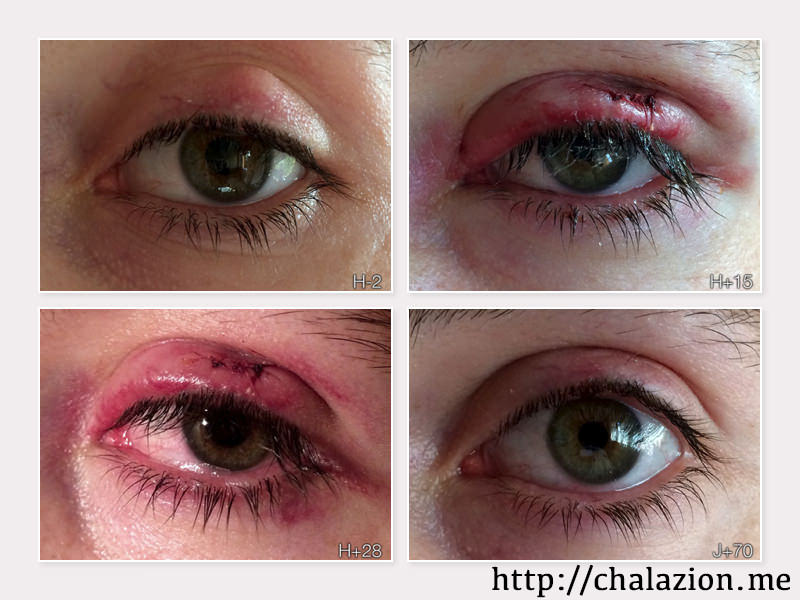Since I couldn't find a detailed summary of a surgical operation to remove a Chalazion, I decided to talk to you about my own experience.
Here's what I will explain to readers:
• How I got my chalazion.
• How the surgery went.
• How my eye has fared since the operation.

It all started when I was an adolescent. I often woke up in the morning with sleep crust on the edges of my eyelids, at the base of the lashes. It was chronic: it would last for a week, and then go away for several months. Over time, it finally went away for good.
Then, two years ago, my eyes regularly began to get red (inflammation), and get small styes that swelled up on my eyelids. They went away after a few days, but it was pretty troublesome.
I got some Sterdex and other collyrium preparations for my eyes.
My ophthalmologist said I had blepharitis. The first time it happened was when I was on a skiing trip (by the way, if anyone sees a link, don't hesitate to send me an email).
The Sterdex helped a little, but the styes kept coming back again and again.
They also recommended that I use Blephaclean (or Blephagel, or Blephasol), in order to clean my eyelids twice a day.
Recently, from out of nowhere, an enormous chalazion appeared and quickly it encysted. Even with the use of Blephaclean and Sterdex, I just couldn't get rid of it. I also tried massages with warm, damp compresses, but none of these treatments worked.
The only thing you can do with an encysted chalazion is to remove it through a small surgical operation.
So then I found an opthalmologist to remove my encysted chalazion.